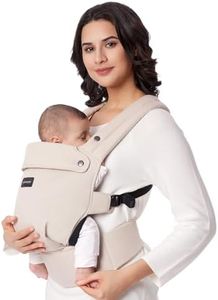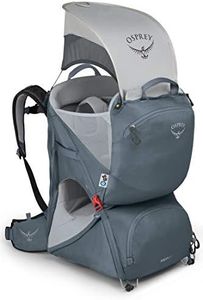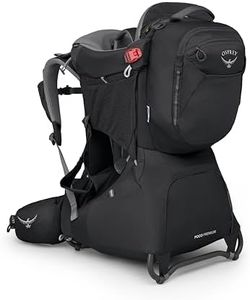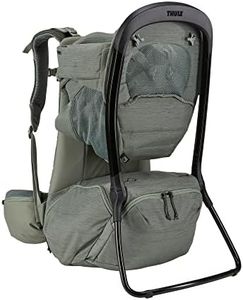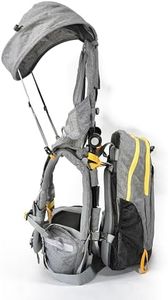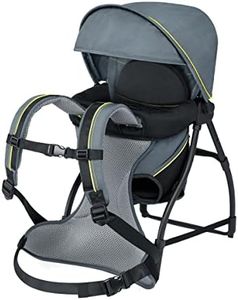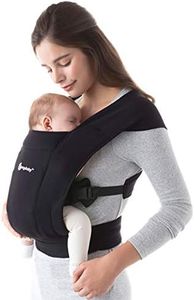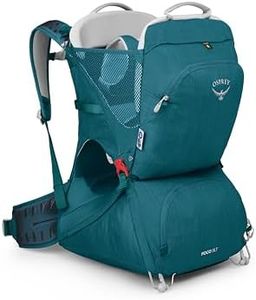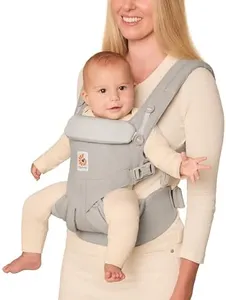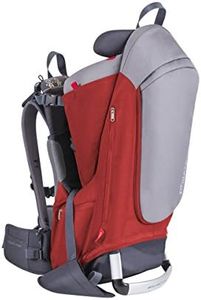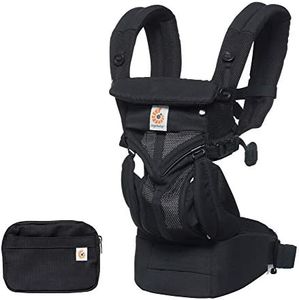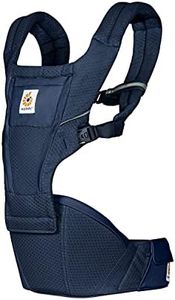We Use CookiesWe use cookies to enhance the security, performance,
functionality and for analytical and promotional activities. By continuing to browse this site you
are agreeing to our privacy policy
10 Best Baby Hiking Carriers
From leading brands and best sellers available on the web.Buying Guide for the Best Baby Hiking Carriers
Choosing the right baby hiking carrier is essential for ensuring both your and your baby’s comfort and safety on the trail. Start by thinking about how long you’ll be hiking, the age and size of your child, and your own physical needs. The best carrier will strike a balance between support, comfort, and ease of use. Always try on carriers if possible before buying, and keep in mind that your needs might change as your baby grows.Weight LimitThe weight limit tells you how much your carrier can safely hold, including both your child and any gear you pack. This is important because using a carrier above its rated weight can lead to discomfort or even safety risks. You’ll find that carriers are often rated for a range, like up to 40 or 50 pounds. If your baby is small, you can go with carriers that support lower maximum weights, but if you plan to use the carrier as your child grows or want to carry extra gear, look for a higher weight limit. Think about your child’s age and how long you expect to use the carrier—if you aim for longevity, a higher weight rating is better.
Fit and AdjustabilityFit and adjustability concern how well the carrier can be resized to suit both the parent and the baby. A carrier that can be easily adjusted for different torso lengths, shoulder widths, and waist sizes will provide better comfort for long hikes, especially if multiple adults will use it. Some carriers have simple strap adjustments, while others feature more customizable systems. If you or your partner have specific body shapes or want to share carrying duties, opt for a model with greater adjustability, and always check if the carrier feels supportive across your back and hips.
Safety Harness SystemThe safety harness keeps your baby secure inside the carrier. Most hiking carriers have a 5-point harness, which secures around your child’s shoulders, waist, and between their legs. A robust harness is crucial for preventing your child from slipping or shifting during movement. Make sure the harness is easy for you to buckle and unbuckle, but hard for a baby to escape. Check that it adjusts to fit your baby snugly as they grow. If your child is especially wiggly or young, a secure and adjustable harness is a must.
Comfort (Padding and Ventilation)Comfort features such as padding and ventilation affect both the parent and the baby. Adequate padding in the shoulder straps, waist belt, and back panel reduces fatigue and discomfort, especially on longer hikes. Ventilation—like mesh panels—helps keep both of you cooler in warm weather. Try on a carrier with weight in it to see if pressure is evenly distributed. If you plan to hike in hotter climates, prioritize good airflow, while extra padding might matter more for longer, rougher trails.
Storage OptionsStorage refers to pockets, compartments, and space designed for carrying extra items like snacks, diapers, and water. Hiking with a baby means carrying more gear, so integrated storage can make your outing more convenient. Some carriers offer large, accessible pockets while others have minimal storage. Consider how much you typically bring on hikes and whether you’d rather have everything in one place or carry an additional backpack. If you hike longer distances, or solo, more storage is probably better.
Sun and Weather ProtectionSun and weather protection features like built-in sunshades, rain covers, or wind shields help keep your baby comfortable and safe from the elements. A sunshade helps prevent sunburn and heat, while rain or wind covers protect from changing weather. The protection level varies—from simple canopies to more extensive coverage—so think about your usual hiking environment. If you hike in sunny or unpredictable weather, built-in protection is a useful addition.
Ease of LoadingEase of loading refers to how simple it is to get your child in and out of the carrier, especially important when you’re managing solo. Some carriers stand on their own with a kickstand, making loading and unloading much easier. Others require you to hold the carrier while placing your child inside. If you’re often hiking alone or need to frequently take your baby in and out, look for carriers with sturdy stands and intuitive harness systems.
